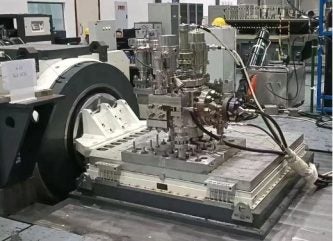
A stabiliser pilot safety valve engineering prototype jointly developed by China National Nuclear Corporation’s (CNNC’s) China Nuclear Power Research & Design Institute and CNNC’s Sufa Technology Industrial Company (STIC) has completed seismic identification testing STIC reported. It also passed on-site examination by the Nuclear & Radiation Safety Centre of the National Nuclear Safety Administration and the Nuclear Equipment Safety & Reliability Centre of the Institute of Mechanical Science.
Such valves are used in the reactor primary loop system and play a vital role in the safe operation of the nuclear power plant. CNNC said the development of the valves “marks a milestone for China’s completely mastering the key technology of nuclear power valves, breaking the monopoly, and having the ability to independently supply nuclear power units, becoming one of the few countries in the world that has mastered this technology”.
STIC said the seismic identification test indicated that a key research and development difficulty of the project had been overcome. The prototype identification is entering it final stage for which recent scientific research results have laid a solid foundation.
STIC is the first listed state-owned holding company in China’s nuclear power valve industry. It has been listed on the Shenzhen Stock Exchange since 1997. It is a leading manufacturing and supply base for industrial fluid machinery valves in China. The company services the petroleum, petrochemical, and chemical industries. It provides advanced standard industry valves domestically and internationally. It was the first Chinese valve manufacturer to obtain API certification in 1982 and was granted DNV international quality certification ISO9001: 2000 and CE certification of the European Community in 2001. STIC was subsequently licensed by other authorities, such as ABS (US), BV (France), DNV (Norway) and CCS (China) for valve manufacturing.
Since being listed, it has increased its financing, and introduced advanced technology, instruments and facilities for testing. Its products are sold to more than 50 countries and regions.






